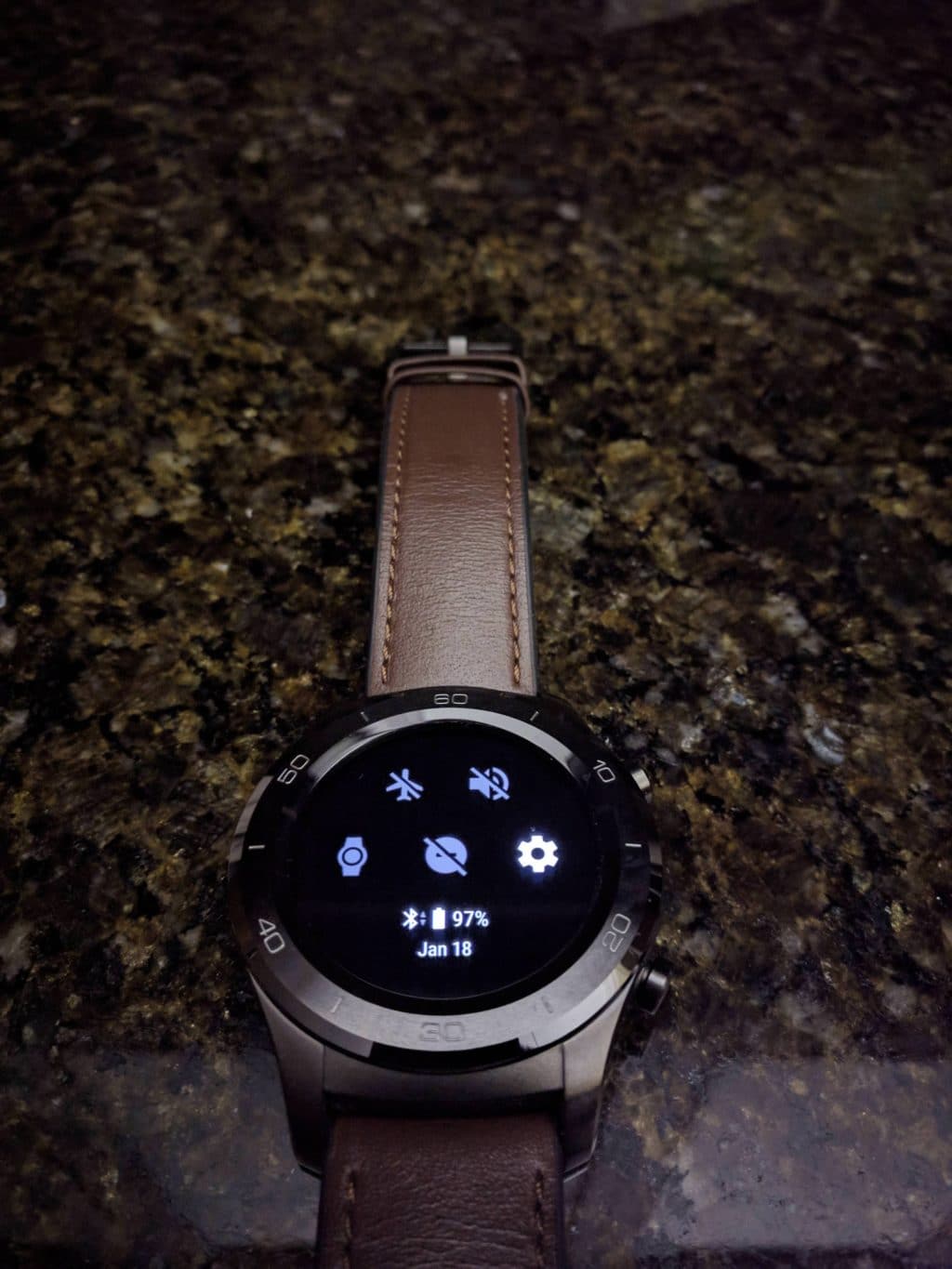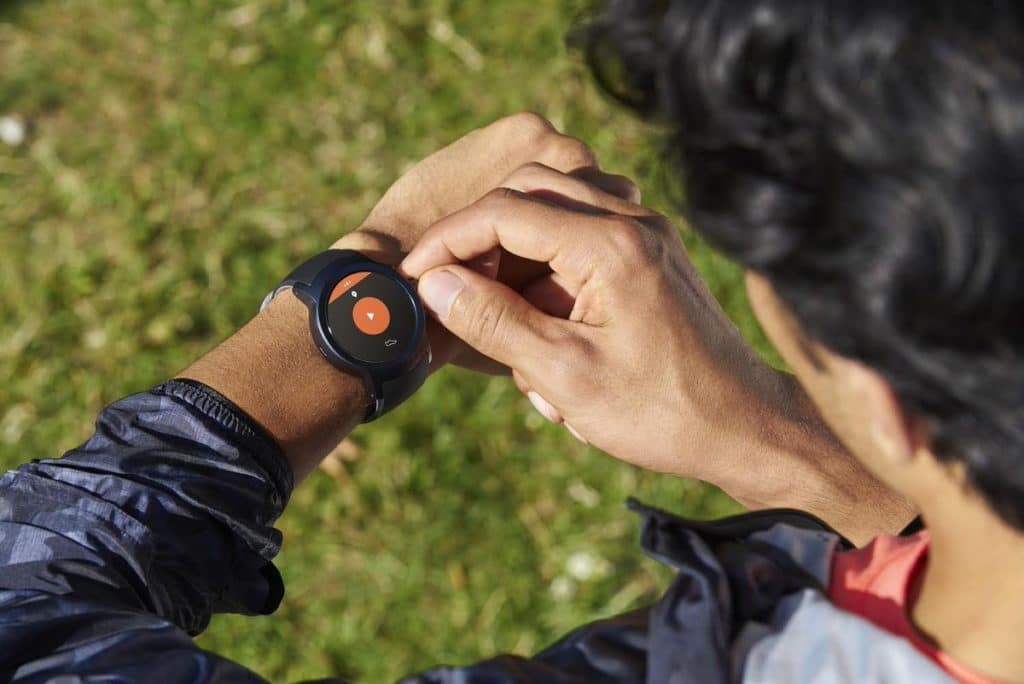
Android Wear is still in its infancy as a platform. The main SDK was announced a few months ago, and the LG G Watch as well as the Samsung Gear Live have barely been available for a few weeks in the market. As a result, the day-to-day experience with Android Wear has been a series of awe-inducing moments followed by frustrations. In the following post, I will detail the best and worst features of the platform (you can also check my separate LG G Watch impressions and Steve’s G Watch / Wear review).
The best features of Android Wear
Notification integration out of the box
One of the first cool features of Android Wear is that developers don’t need to do an awful lot to integrate their apps with the platform. Notifications get pushed to the watch instantly, and if the developer has implemented expanded notifications with action buttons, these will show up as separate swipable actions on Wear.
The result is that most music application controls work by default, even Pocket Casts and Retune for example. The latter is how I was able to control my iTunes’ music playback on the iMac from my watch.

Controlling iTunes on the Mac through the watch
Google Now
Google Now is infinitely more useful when you don’t have to manually launch it on your phone. The fact that cards get pushed to you when you are most likely to need them makes all the difference in the experience. I find myself using them a lot more now that they are waiting for me when I lift my wrist and I suspect that they will be even more useful once I travel to London next month, or once winter starts and the weather becomes wonkier for example.
Voice actions and replies
Launching a quick Google search like currency conversions or math calculations is literally “handy” with Wear. Even better is setting timers and reminders. But one aspect of Wear I have been completely digging is voice replies to Hangout messages (and recently, tweets!)
See, when you get a Hangout message notification, Wear shows you the last message received. Swipe once to see the entire conversation. Swipe again to get a Reply button. Google will transcribe your voice into text that it automatically sends back as a reply (you can cancel if you don’t like the transcription). It’s a bit magical, and made even cooler right now for me because I have been suffering from my Carpal Tunnel pain and avoiding handling any electronics for long periods of time.
The same Hangouts experience is replicated in Tweetings to send replies to Twitter mentions. Thanks to both apps, I can often leave my phone sitting on my desk, screen off, and handle most of my interactions from the watch. It’s entirely freeing, and somewhat freaky — just ask my assistant who keeps on perking up every time she hears my voice only to realize that I am addressing the watch and not her.
The worst features of Android Wear
Battery life
Android Wear’s battery life is a bit on the pathetic side for now. Yes, the platform can do a lot, but it should be able to pull at least 2 days of intense use at a decent brightness level. That’s, unfortunately, not possible. And it’s even made more difficult because you can’t deactivate the built-in Step Counter (you can hide it, but it’s always trying to count your steps) nor can you stop the watch from always waiting for the gesture to wake it up (unless you are in the silent mode).
Because the step counter is inaccurate at best, and the gesture works at the most inopportune of times but misses a few times when you need it (also, you can always tap the screen to wake the watch), disabling all of these unnecessary accelerometer features from always running in the background would help a lot in extending the watch’s battery life.
Launching apps
Right now, there are 2 ways to launch apps on Android Wear. You either speak to the watch and say “OK Google, Start app name,” (very odd in public) or you tap the screen and then scroll the Google search interface to get to the Start option, click that, and then scroll through the list of apps.
Wear Mini Launcher provides an alternative, but it borrows a lot more from the way you interact with phones by providing a side-menu than the more fluid voice and gesture way of Wear. There must be a better way that is less clunky than Wear Mini Launcher but also more simple than the default methods.
Limitations and quirks
The platform being in its infancy, there are many more quirks to handle with Wear.
- Dismissing a notification sends it away for good, with no way to bring it back.
- Many apps are yet to be updated to offer better Wear integration (I’m looking at you, WhatsApp!)
- There’s no way to launch your selected music or podcast yet, unless you get Google Now to handle that request (“Ok Google, play some Imagine Dragons”)
- Voice input is still limited to Google Now and typing replies. There’s no way to skip a song or actually initiate a reply or archive a message without first scrolling to the action and clicking its button.
- Voice transcription is still a bit iffy. I have a ~ 90% american accent and I still have trouble getting Google to understand my exact words sometimes, even when I speak clearly. “Strong beasts” became “Tron beats” just a few hours ago…
- Setting up Wear was an exercise in frustration. As Steve mentioned in his review, there seems to be a very specific sequence to do it, otherwise you end up with a plague of issues.
Wear is an incredibly powerful and promising platform, so much so that my G Watch has now become my first screen, taking precedence over my smartphone, which remains on the desk or in my pocket until I really need to deal with something that Wear can’t handle. However, the platform still needs a lot of improvements in order to be usable and helpful to most people.
Do you have an Android Wear watch? If so, which features do you like most?
















